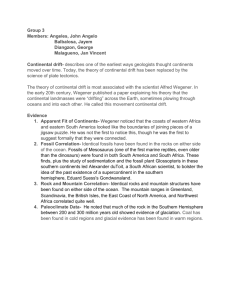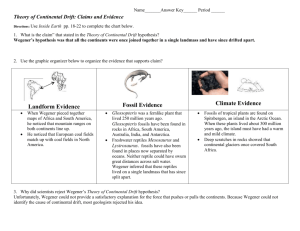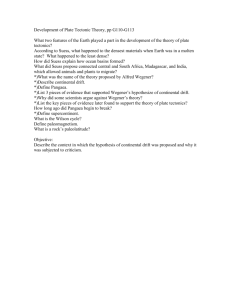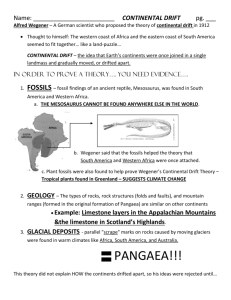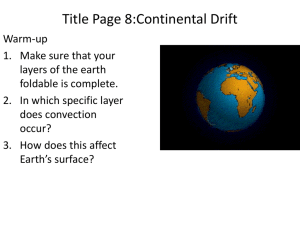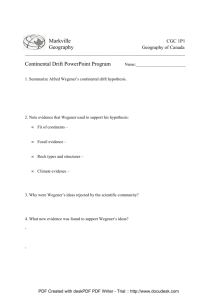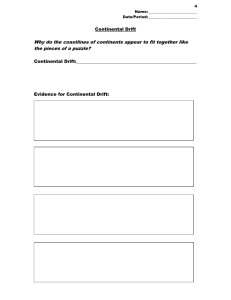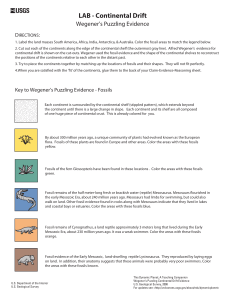Glaciers
advertisement
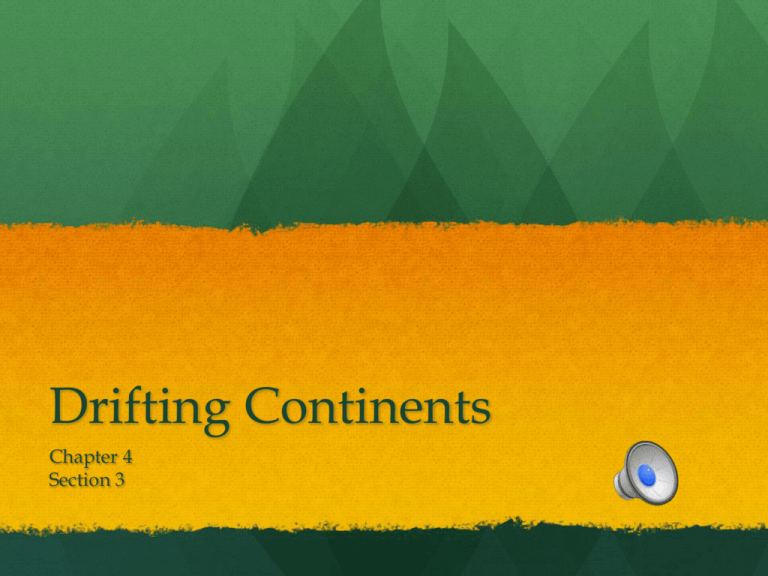
Drifting Continents Chapter 4 Section 3 Standards S 6.1a Students know evidence of plate tectonics is derived from the fit of the continents, the location of earthquakes, volcanoes and mid ocean ridges; and the distribution of fossils, rock types and ancient climate zones. Anticipatory Set What is different? Vocabulary Continental drift Pangaea fossil Continental Drift Wegener’s hypothesis was that all the continents were once joined together in a single landmass and have since drifted apart. The following evidence supports Wegener’s hypothesis: Evidence from landforms Evidence from fossils Evidence from human remains Evidence from climate Wegener gathered evidence from different scientific fields to support his ideas about continental drift. He studied land features, fossils, and evidence of climate change. Most geologists rejected Alfred Wegener’s idea of continental drift because Wegener could not identify a force that could move the continents. Continental Drift/ Fossils Any trace of an ancient organism that has been preserved in rock is called a fossil. Fossils have been found in rocks in Africa, south America, Australia, India and Antarctica. Supports the fact that Pangaea existed. Continental Drift/Climate Climate zones Fossils show that South Africa actually used to be very cold. There were deep scratches in the rocks left from glaciers. Now the temperature is too warm for glaciers to form. He concluded that the drift moved South Africa away from the south pole. Checking for Understanding Who proposed the concept of continental drift? What was the original temperature of South Africa? What are the four ways that support drifting continents? Guided Practice Independent Practice Guided Practice: front side of worksheet Stop See Ms. Graham Independent Practice: Back side. Not finished it is homework.
